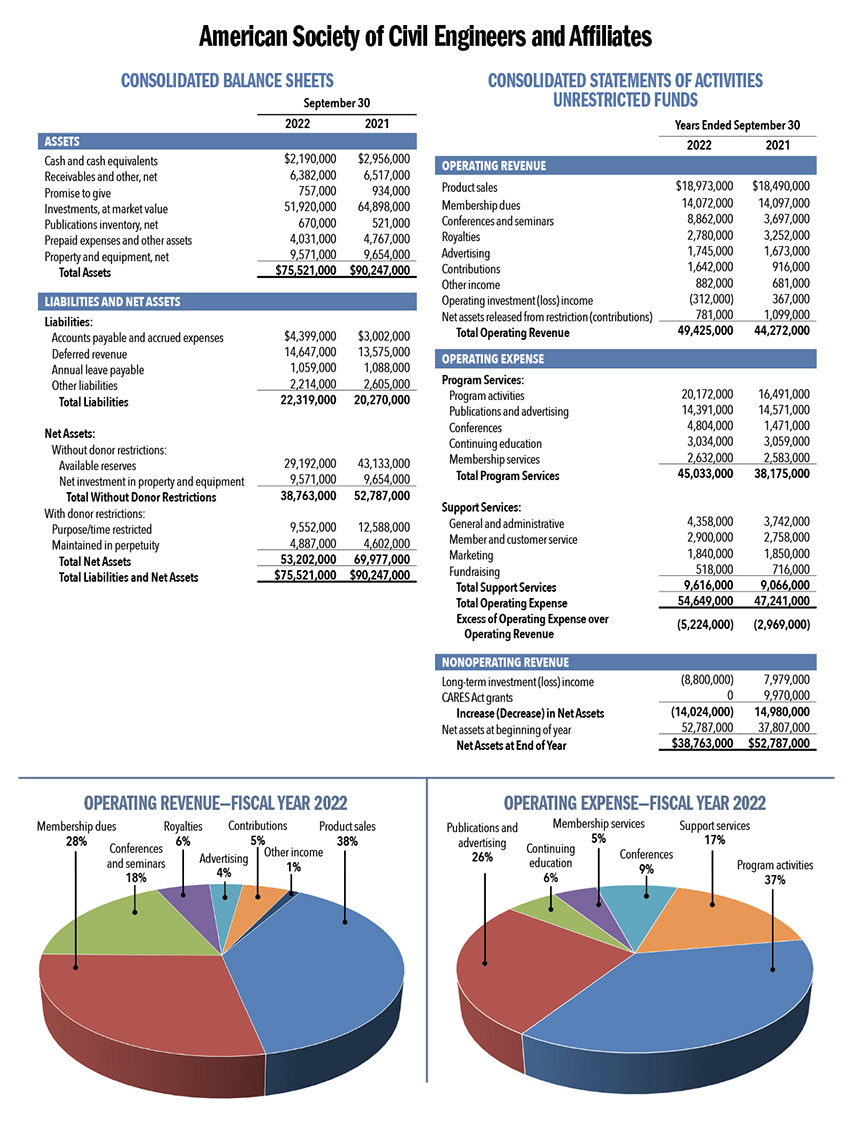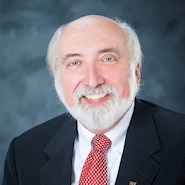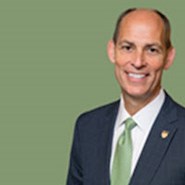
By Dennis D. Truax, Ph.D., P.E., D.WRE, F.NSPE, F.ASCE, and Thomas W. Smith III, ENV SP, CAE, F.ASCE
2022 was a year of great progress for ASCE. By collaborating with various organizations and agencies but most importantly you — our engaged members — we’ve taken significant steps toward advancing the profession, fostering innovation, and leading the charge to protect and improve our nation’s infrastructure.
We are being heard, often quoted, in statehouses across the country and on Capitol Hill to advocate for infrastructure. Though the COVID-19 pandemic may have changed our approach, it did not stop us. For example, in March we held our first hybrid Legislative Fly-In for over 220 members to meet with members of Congress and senior legislative staff to address the Society’s collective public policy priorities.
While the signing of the bipartisan infrastructure law in 2021 marked a historic moment, it was just the beginning. In 2022, ASCE’s annual Infrastructure Roundtable series examined ways to effectively use funding from the legislation. We also launched the IIJA Implementation Resource Center to help members track the bill’s progress at the national and local levels. Since the launch of this resource, we’ve had nearly 11,000 visitors to the portal.
Soon after, we joined White House Infrastructure Coordinator Mitch Landrieu and U.S. Secretary of Transportation Pete Buttigieg at the White House Accelerating Infrastructure Summit. Additionally, ASCE 2023 President Maria C. Lehman, P.E., ENV SP, F.ASCE, and Norma Jean Mattei, Ph.D., P.E., F.SEI, F.ASCE, Pres.17.ASCE, were appointed by U.S. President Joe Biden to the National Infrastructure Advisory Council. Although these are major accomplishments, there is still much to do.
Integrating sustainability into practice will also help address changing environmental, social, and economic conditions ethically and responsibly. We released the ASCE/SEI 7-22 Minimum Design Loads and Associated Criteria for Buildings and Other Structures to advance this effort. Revised every six years, the 2022 edition includes the first-ever criteria for tornado-resistant design.
While we are addressing society’s needs today, we are also highlighting engineers’ role in safeguarding the future through the Future World Vision program. In February, we launched Mega City 2070 — a digital platform presenting a plausible city and its evolution from 2020 to 2070. This initiative allows today’s engineers to collaborate and holistically understand the dynamic technical, environmental, and socioeconomic systems of the future.
To foster this innovation in current and aspiring engineers, ASCE reunited with MacGillivray Freeman Films for another giant-screen feature film, Cities of the Future: Reimagining Our World. Intended to be just as inspirational as Dream Big: Engineering Our World, this movie will explore the ways civil engineering solves society’s greatest challenges. It will also help clarify civil engineers’ role as servant leaders and determine the impact they will have on communities’ future successes. The film will premiere at the ASCE 2023 Convention in Chicago.
In October, the Board of Direction passed the 2023-2028 Strategic Plan to prepare members for the many current and future shifts in civil engineering. The plan emphasizes the importance of sustainable, resilient, future-ready infrastructure while putting ASCE members and the civil engineering profession at the forefront of that work. It also provides a road map for optimizing the use of member resources to maximize impact and minimize expenditures.
The work we do now will set the stage for years to come. Much of that work comes down to supporting the next generations of civil engineers. Therefore, we continue to strengthen our ties with students and younger members to guide them toward meaningful, successful careers. That included the first-ever regional summit hosted by the ASCE Student Presidential Group in March and the regional YMC+ events hosted by younger member groups and the Committee on Younger Members throughout the summer.
ASCE is committed to serving civil engineers who are shaping the world. And the future looks bright thanks to your service and leadership, which are building a better world for today and tomorrow.
Fiscal 2022 financial report
For fiscal year 2022, the Society and its affiliates had unrestricted operating revenues of $49.4 million and operating expenses of $54.6 million, with the Society funding expenses in excess of revenues by using earnings on our investment portfolio, program contributions from the ASCE Foundation, and reserves. Revenues have begun to grow as the financial impacts of COVID-19 subside.
The Society continues to be in sound financial condition. Our policy of building and maintaining a reserve fund, which totaled $29.2 million at year-end 2022, is a key factor in our positive financial condition. The reserve fund has been built primarily from earnings on our long-term investment fund, which yielded $8 million in 2021 and lost $8.8 million in 2022 due to market declines.
The relationship between annual operating revenue and program expenses is a key long-term issue that the Board of Direction continues to address in order to maintain our continued strong financial condition while serving our membership and the public interest.

Dennis D. Truax, Ph.D., P.E., D.WRE, F.NSPE, F.ASCE, was the ASCE 2022 president. Thomas W. Smith III, CAE, ENV SP, F.ASCE, is ASCE's executive director.
This report first appeared in the March/April 2023 issue of Civil Engineering.




